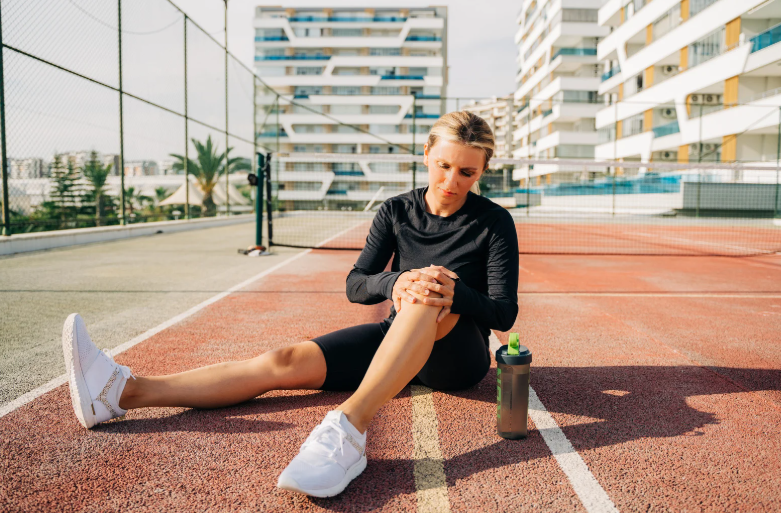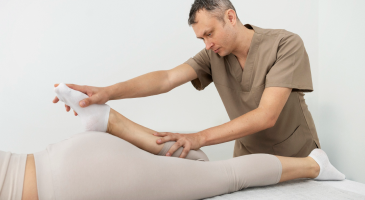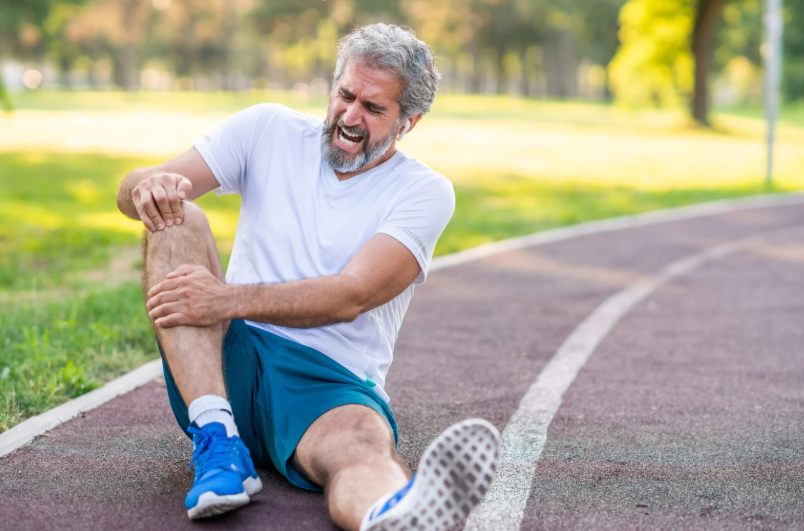
1) Knee Cap Pain – Discover and Manage It
1) Understanding and Managing Knee Cap Pain: A Comprehensive Guide
Knee cap pain, also known as patellofemoral pain syndrome (PFPS), is a frustrating and sometimes debilitating condition that can impact everything from walking up the stairs to enjoying your favourite sports. Whether you’re an elite athlete, a weekend warrior, or someone who prefers the comforts of the couch, knee cap pain doesn’t discriminate—it can affect anyone.
At XPHYSIO, we’ve seen knee cap pain in all people with different ages, shapes and sizes. From young athletes tackling back-to-back training sessions to office workers dealing with aches from long hours at their desks, knee cap pain is a frequent complaint that brings people through our doors. But the good news? It’s highly manageable with the right approach. Let’s dive into what knee cap pain is all about, its common causes, and how physiotherapy can help get you back on track.
What is Knee Cap Pain?
Patellofemoral pain syndrome refers to pain originating from the kneecap (patella) and its surrounding structures. It’s not just a single condition but more of a broad term covering various issues that cause pain at the front of the knee. While the causes can vary, the outcome is often the same—discomfort, frustration, and a nagging impact on daily life.
This type of pain often presents as an ache behind or around the knee cap, particularly during activities like squatting, climbing stairs, running, or even sitting for prolonged periods. The level of discomfort can range from mild annoyance to severe pain that interferes with mobility and overall quality of life.
What Causes Knee Cap Pain?
Knee cap pain can be linked to several factors. Let’s explore some of the most common culprits:
1. Overuse and Maltracking
- Repetitive Activities: High-impact or repetitive movements, like running or jumping, can place excessive stress on the knee joint, leading to irritation and pain.
- Maltracking of the Patella: Sometimes, the knee cap doesn’t glide smoothly in its groove, which can cause it to shift out of alignment. This misalignment often leads to pain and discomfort, especially during weight-bearing activities.
2. Muscle Imbalances
- Weak or tight muscles surrounding the knee—such as the glutes, quadriceps, hamstrings, and calves—can change the pressure through the knee joint, leading to increased strain on the patella.
- Often, this imbalance creates a “tug-of-war” effect where one muscle group overpowers another, pulling the knee cap out of its natural position.
3. Poor Biomechanics
- Issues like flat feet, high arches, or leg length discrepancies can disrupt how the knee functions during movement.
- Abnormal walking or running patterns, often influenced by footwear or old injuries, can exacerbate strain on the knee cap.
4. Trauma or Injury
- A direct blow or fall onto the knee can damage the structures around the patella, resulting in inflammation, swelling, and pain.
- Additionally, knee cap pain often appears as a secondary problem during rehabilitation from surgeries or injuries, such as ACL reconstructions.
How Can Physiotherapy Help?
Physiotherapy is a cornerstone in managing and preventing knee cap pain. By identifying the root cause and addressing the contributing factors, physiotherapy can offer a tailored solution for lasting relief. Here’s what a typical plan might look like:
1. Assessment and Diagnosis
The first step in tackling knee cap pain is a comprehensive assessment. A physiotherapist will evaluate your:
- Joint mobility to check for stiffness or restrictions.
- Muscle strength and balance to identify weak or tight areas.
- Biomechanics to pinpoint any alignment or movement issues.
This thorough evaluation helps create a personalised treatment plan that targets your specific needs.
As we often remind our clients:
“In rehabilitation, there’s no elevator to success—you’ve got to take it one step at a time.”
2. Pain Management
In the initial stages, the focus is on reducing pain and inflammation. Strategies might include:
- Ice Therapy: Applying cold packs to minimise swelling and provide relief.
- Movement Education: Learning how to move in ways that avoid aggravating the pain.
- K-Taping or Strapping Techniques: These methods can support the knee cap and alleviate discomfort during activities.
- Targeted Exercises: Gentle movements to improve blood flow and reduce stiffness.
3. Muscle Strengthening
Strengthening the muscles around the knee is critical for long-term recovery. This includes exercises that focus on:
- Quadriceps: To improve patellar tracking.
- Hamstrings and Glutes: To stabilise the knee and control movement.
- Hip Muscles: Strong hips play a surprising role in reducing knee stress.
A skilled physio will ensure that your exercises are tailored to your capacity, avoiding activities that trigger pain.
4. Stretching and Flexibility Work
Tight muscles can tug on the patella, exacerbating discomfort. Stretching and massage techniques are used to:
- Increase flexibility in the quads, hamstrings, and calves.
- Release tension in the surrounding soft tissues.
- Improve overall joint mobility.
5. Biomechanical Correction
If poor biomechanics are part of the problem, your physio might recommend:
- Orthotics: Custom insoles can correct flat feet or other alignment issues.
- Movement Re-education: Teaching you to walk, run, or squat more efficiently.
6. Proprioceptive Training
Proprioception refers to your body’s ability to sense where it is in space. Balance exercises, like standing on one leg or using a wobble board, can:
- Improve knee stability.
- Reduce the likelihood of future injuries.
7. Functional Rehabilitation
The ultimate goal is to get you back to your normal activities—whether that’s chasing after your kids, playing footy, or simply walking without pain. Functional rehabilitation focuses on exercises that mimic real-life movements, ensuring a smooth and confident return to your daily routine.
“In rehabilitation, there is no elevator. You have to take one step at a time“


Preventing Knee Cap Pain
Physiotherapy isn’t just about treating pain—it’s also about preventing it. Here are some tips to keep your knees happy and healthy:
1. Warm Up and Cool Down
Always start with a proper warm-up before exercising and finish with a cool-down. This helps prepare your muscles and joints, reducing the risk of injury.
2. Gradual Progression
Avoid jumping into intense activities too quickly. Gradually increase the intensity and duration of your workouts to give your body time to adapt.
3. Choose the Right Footwear
Supportive shoes with good arch support can make a world of difference in preventing biomechanical issues.
4. Regular Exercise
A balanced routine that includes strength training, stretching, and cardiovascular activities will help maintain healthy joints.
Final Thoughts: Taking Steps Towards Pain-Free Knees
Knee cap pain can be a real nuisance, but it doesn’t have to be a permanent fixture in your life. With the right mix of targeted physiotherapy, proactive measures, and a touch of patience, you can regain control and get back to doing the things you love.
At XPHYSIO, we’re here to guide you every step of the way. Whether you’re just starting to notice some discomfort or have been battling knee cap pain for years, our team is ready to help. Let’s work together to keep your knees strong, stable, and pain-free.
Feel free to reach out if you’re experiencing knee cap pain—your journey to recovery starts here!
Causes of Knee Cap Pain:
Overuse and Maltracking
- Repetitive activities, such as running or jumping, can lead to overuse of the knee joint.
- Maltracking of the patella (knee cap) can cause misalignment, shifting the knee cap out of the natural position, resulting in pain and discomfort.
- Muscle Imbalances
- Weakness or tightness in the muscles surrounding the knee, particularly the gluteal muscles, quadriceps and hamstrings, can contribute to knee cap pain
Poor Biomechanics:
- Issues with foot arches, leg length discrepancies, or abnormal walking patterns can affect the alignment of the knee joint, leading to pain.
Trauma or Injury:
- Direct impact or trauma to the knee can cause damage to the structures around the knee cap, resulting in pain and inflammation.
- Knee cap pain is often seen as a secondary injury, during post op knee rehabilitation.
Physiotherapy Interventions:
Assessment and Diagnosis:
- A thorough assessment by a physiotherapist is essential to identify the underlying causes of knee cap pain.
- Evaluation of joint mobility, muscle strength, and biomechanics helps in creating a personalised treatment plan.
Pain Management:
- Initially, reducing pain and inflammation is a priority. This may involve the use of ice, education regarding movement patterns, strapping techniques and specific exercises to alleviate discomfort.
Muscle Strengthening:
- Targeted exercises to strengthen the quadriceps, hamstrings, and hip muscles can help improve the stability of the knee joint and correct muscle imbalances. Specific care is taken to ensure the patient is not reproducing their symptoms whilst doing their strengthening exercises
Stretching, massage and Flexibility:
- Stretching and massage techniques for the muscles around the knee, can enhance flexibility and reduce tension.
Biomechanical Correction:
- Addressing issues such as flat feet or abnormal gait through orthotics or specific exercises can help improve overall biomechanics.
Proprioceptive Training:
- Activities that enhance proprioception, such as balance exercises, can improve joint awareness and reduce the risk of future injuries.
Functional Rehabilitation:
- Tailored exercises that mimic daily activities or sports-specific movements can ensure a safe return to regular activities.
Preventive Measures:
Proper Warm-up and Cool Down:
- Engaging in a comprehensive warm-up before physical activity and a cool down afterward can reduce the risk of overuse injuries.
Gradual Progression:
- Avoiding sudden increases in activity intensity or duration helps prevent excessive stress on the knee joint.
Appropriate Footwear:
- Wearing appropriate footwear with proper arch support can contribute to better biomechanics and reduce the risk of knee cap pain.
Regular Exercise:
- Maintaining a balanced exercise routine that includes strength training, flexibility exercises, and cardiovascular activities can promote overall joint health.
Physiotherapy plays a crucial role in the management and prevention of knee cap pain. Through a combination of targeted exercises, biomechanical corrections, and preventive measures, individuals can overcome patellofemoral pain and enjoy an active, pain-free lifestyle. If you’re experiencing knee cap pain, reach out to us at XPHYSIO and we can get your knee cap back on track!



